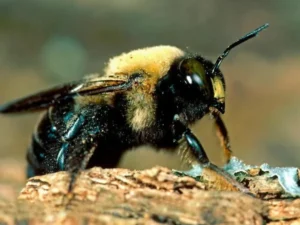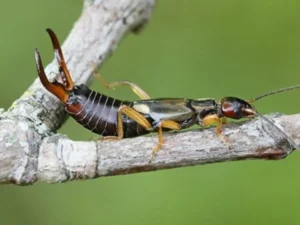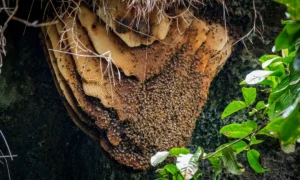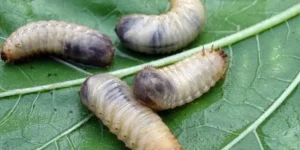The carpenter bees can cause immense damage to homes and wooden structures in silence for a long time. These solitary insects are not honeybees, they drill holes into treated or untreated wood beams, decks, siding, or fascia boards over many years to build their nests. Although they are great pollinators, their wood-boring behavior can cause expensive damage as well as continued infestations if they’re not treated. In this guide, we will take you through the most effective methods on how to get rid of carpenter bees, from natural remedies to chemical ones.
How to Eliminate Carpenter Bees
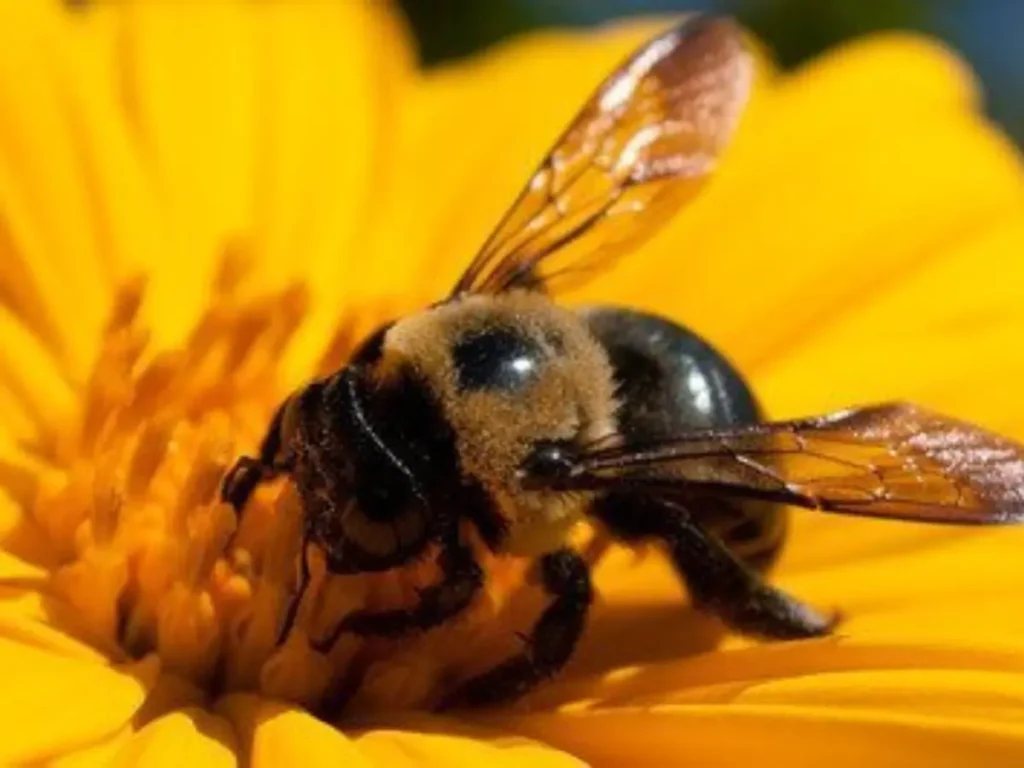
Carpenter bees look like bumblebees, but they act differently. They’re solitary creatures, with females drilling round holes in wood to make tunnels for their offspring. However, they don’t eat wood, as termites do, but weaken it structurally over time by nesting repeatedly in the same place.
They are especially attracted to soft, unpainted, or untreated woods; cedar, pine, and redwood are high on the list. Males are known for hovering aggressively near their nests, but they cannot sting. But females can sting, but do so when provoked.
Common signs of a carpenter bee problem:
Round holes (entry) in wood surfaces
Sawdust piles beneath these holes
Buzzing or flying near wooden structures
Naturally Get Rid of Carpenter Bees
You can avoid harsh chemicals by using a variety of natural deterrents that have been found to help keep carpenter bees work. Now, let’s talk about how to vanish them — and prevent them from returning.
Citrus Spray for Carpenter Bees
Carpenter bees hate the smell of citrus. You can make your homemade citrus spray by boiling citrus peels (lemon, orange, lime) in water for 10–15 minutes. Allow to cool, then pour into a spray bottle.
Spray it directly into holes and around nesting areas. The fragrance prevents them from returning and is safe for pets, people, and beneficial insects.
Essential Oils Smell Carpenter Bees Hate
Carpenter bees are sensitive to strong smells. Too many strong odors will drive them away. Essential oils such as:
Tea tree oil
Lavender oil
Eucalyptus oil
Citrus oil
Almond oil (can be diluted and sprayed at entry points.)
Use once a week, especially in spring when carpenter bees are very active.
Does Hemp Seed Oil Repel Carpenter Bees?
While hemp seed oil isn’t a widely known deterrent, it has been reported to have mild repellent effects. There is less scientific backing behind its effectiveness than for citrus or essential oils, but it can be included in multi-oil repellent blends for good measure.
Orange Oil Polish: Repellent or Myth?
Does orange oil polish repel carpenter bees? Orange oil furniture polish (and wood conditioner) used to condition wood furniture contains d-limonene, a natural substance that repels carpenter bees. It’s not as powerful as fresh citrus sprays or essential oils, but it reduces attraction to exposed wooden surfaces when it’s applied regularly.
Chemical Methods for Carpenter Bee Removal
Boric Acid for Carpenter Bees
Boric acid is a standard insecticide used for a range of pests, including. It acts both as stomach and contact poison. You can use boric acid to dust in the live carpenter bee holes or spots where you know they like to hover. When bees touch or consume the acid, it acts on their nervous system. Use it with care — it’s toxic to pets and non-target insects.
Note: Boric acid should never be accessible to children or pets or left in an uncontrolled setting.
Will Borax Kill Carpenter Bees?
Borax, which is mistaken for boric acid, has a similar action, although it tends to be less potent. Borax is harmful to carpenter bees when they ingest it, but it is not as effective as boric acid for controlling bees. However, it may deter bee activity when dusted in tunnel entrances or as bait traps.
Use a Professional Carpenter Bee Repellent Spray
There are commercial repellent sprays made especially for carpenter bees, available at most hardware stores. These include synthetic pyrethroids — insecticides to target down bees’ nervous systems.
How to Apply: Apply sprays directly onto openings and the surrounding surfaces of wooden doors. Reapply throughout the active season (spring to early fall) or after heavy rain for continued protection.
How to keep Carpenter Bees away
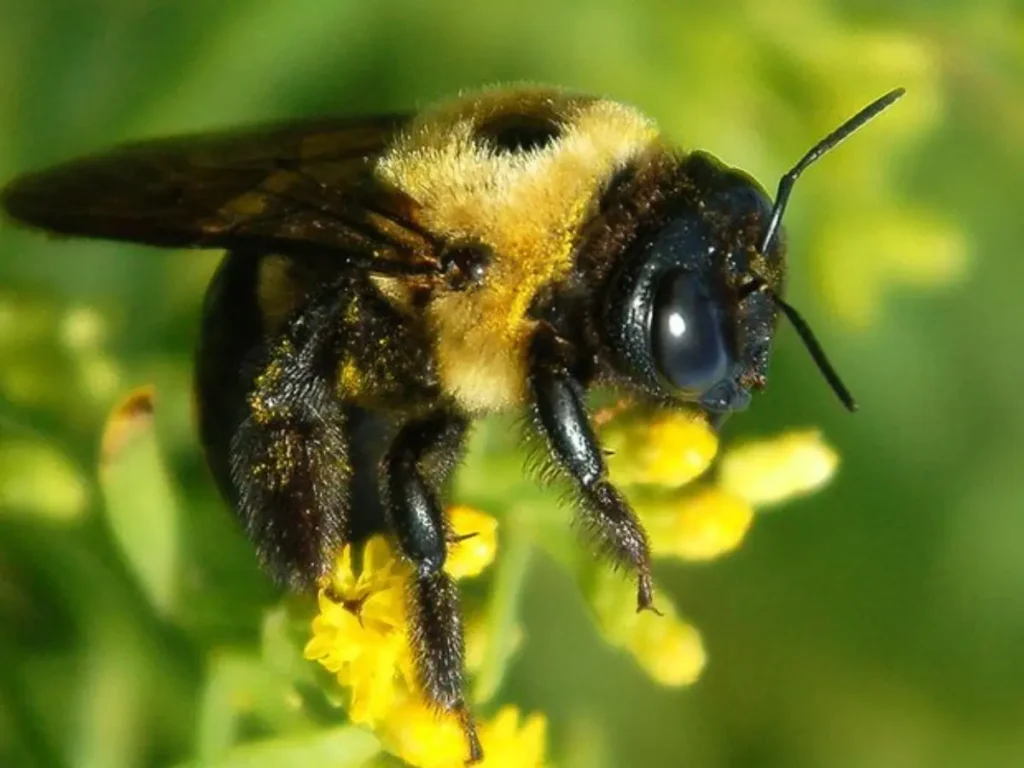
Prevention is more effective than a cure. Once you’ve cleared out the bees or sealed off their entry, you can follow these steps to ensure they don’t resettle in the space.
Seal Up Old Holes and Entrance Points
Carpenter bees will come back to the same nests every year. If you remove most bees, seal off any old holes with wood filler, caulk, or even dowels with wood glue. However, when it’s dry, sand and paint over the spot. This breaks and discourages re-entry, reinforcing the structure.
Paint or Varnish Exposed Wood
Carpenter bees avoid treated or painted wood. Painting, staining, or using polyurethane varnish on the areas can also help decrease their desire to nest in these areas. Pay attention to Soffits, Fascia Boards, Eaves, Railings, Decking and also the Siding.
Install Bee Traps
Bee traps are a natural, chemical-free, humane carpenter bee trap that provides good protection. These are wooden boxes that attract the bees inside with a small hole, and then the bees can’t get out, and they die. Place traps in areas that have had previous bee activity (on decks, in attics, sheds, and under roof eaves).
Are Carpenter Bees Bad?
Carpenter bees aren’t inherently bad— they’re very good pollinators and have a good overall impact on local ecosystems. But- they are a problem if they nest in structural wood.
The tunnels they form over time can weaken structural beams, fascia boards, and decking. Multiple bees nesting can cause extensive and expensive structural problems.
Getting them out of and away from the structures of your home is probably a good idea, from a proactive standpoint.
Conclusion
You don’t need to use hazardous chemicals or exterminators to get rid of carpenter bees; all it requires is a strategy. The options are diverse, ranging from all-natural to extremely targeted. Moreover, the trick is early action and consistency. So treat holes and take precautions by sealing wood and painting surfaces. Take the right approach and protect your home without sacrificing the local ecosystem.
FAQ’s
Things like citrus, eucalyptus, tea tree oil, and almond oil tend to repel carpenter bees naturally. You can spray these smells around their nests.
Yes. Citrus sprays made at home are among the best natural repellant tools out there. Boil the rinds of citrus fruits in water and spray into existing holes and on wood.
It sure will, boric acid will kill carpenter bees when poured in their nesting tunnels. Use it sparingly and dry the fruit before powdering for optimum results.
Yes. While they don’t actually consume wood, their nest-building habits can, over time, compromise the structural integrity of their surroundings — particularly when several bees are returning to the same spot year-after-year.
Natural Bee Repellents: Lay citrus sprays, seal the entry holes, apply the essential oil, and place bee traps. These methods are successful and sustainable.

